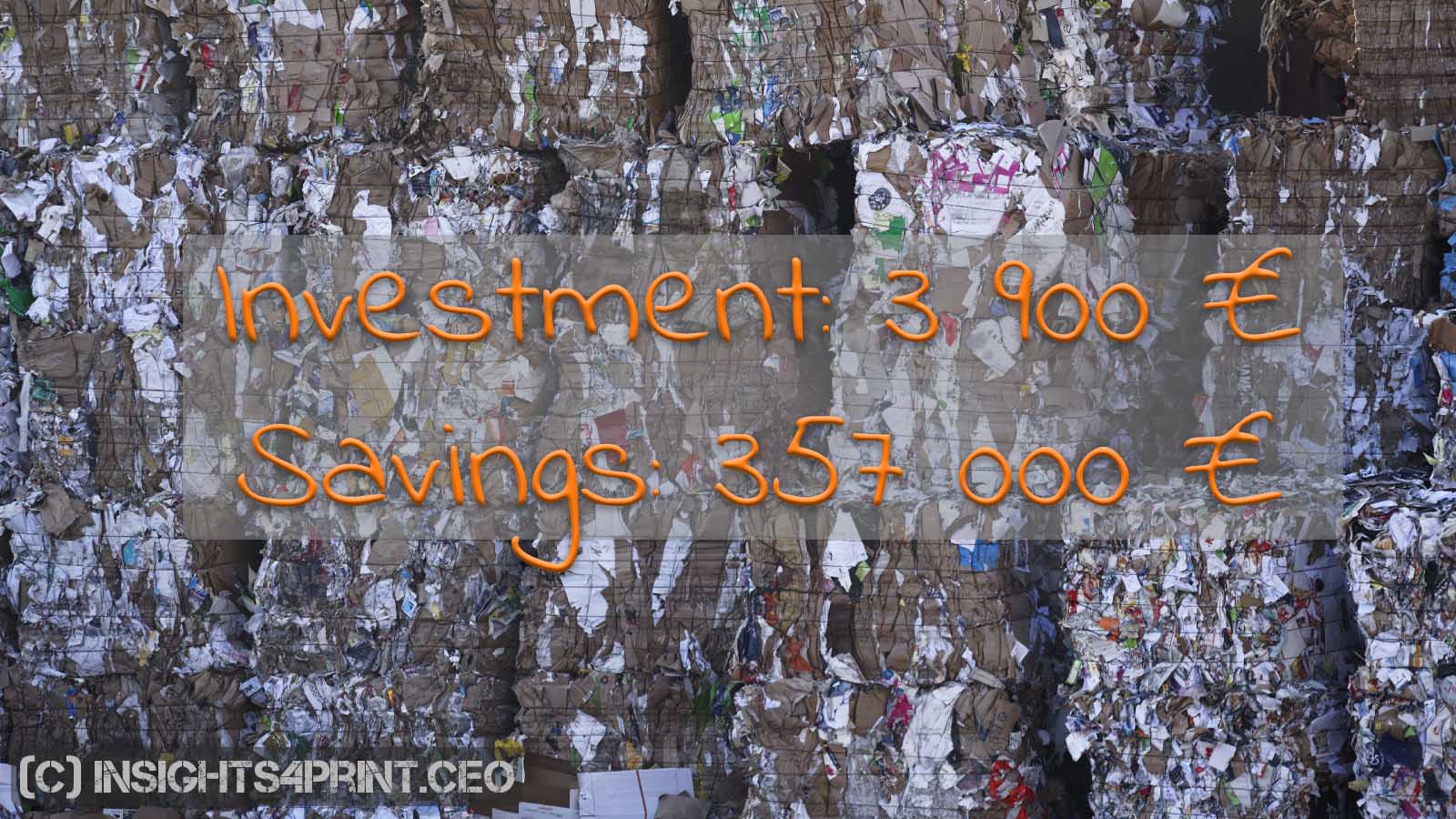
Sometimes it can be easy, you just have to find and use the right incentives. That’s what a printing company in France, named Quo Vadis, did. And now they are saving 357.000 euro per year on paper waste. And all of this with an investment of only 3.900 euro…
How did they do that? Well, it was rather simple: they invested in colored boxed (1500 euro) to separate different types of paper waste. And this was done at the place where the waste was generated, by the people who generated the waste. The company organized an internal communication campaign (worth 2400 euro) to make everybody aware of paper waste and show everybody’s responsibility in preventing paper waste, in waste management. This resulted in a decline of 20% in paper waste, meaning: 296 tons of paper waste prevented. Taking into account all costs that are related to paper and printing, this is a saving of 357.000 euro on a yearly basis. You can read the details in this article in the French magazine GraphiLine.
To put the savings in more perspective, I looked up the turnover of the company: 32,1 million euro in 2015. So the savings in paper waste are just over 1% of the turnover. Which is not bad, in an industry where the average profit margin is only a few percent…
How much paper does not reach your customer?
This story reminds me of a project at a printing company in the Netherlands, must have been over a decade ago. The manager had hired two students to look at his paper usage and paper waste, as their thesis work. They went through the whole production process and analyzed every step. Their conclusion was hard: about 30% of the purchased paper did not reach the customer. Thirty percent! That figure astonished the manager… He immediately took measures to avoid unnecessary paper waste. And for the record: this was not a bad company, they performed rather well and delivered good quality. The company started a century ago and is still thriving anno 2016.
One interesting measure was limiting the amount of setup sheets. This is something I’ve seen in more print shops: effectively limit the amount of sheets that a printer gets for a job. He will get up to color faster… (read also this article about the number of setup sheets!)
The financial perspective
If we look at industry statistics for commercial printing shops, the cost of paper (substrate) is around 40% of the total cost. So the 30% paper that doesn’t reach the customer represents a significant amount of money: 12% of the total costs.
It will never be possible to get to a zero percent paper waste. There will always be losses, e.g. cutting waste. But you can try to minimize it. A slightly different final format could mean a better utilization of the total sheet, e.g. when putting a large amount of different business cards on one sheet…
Why is this important?
Waste is a waste of time and money. So if you can prevent waste, it’s a good idea from every perspective. And sometimes it can be easy, creating awareness across the whole team and providing them with the right tools, is an important step.
But maybe you could start with that – not too difficult – calculation: how much paper, cardboard, … do you buy last year? And how much was delivered to your customers?
Update 15/12/2016: earlier this week I heared what the result of the exercise at the printing company in the Netherlands was: they brought down the ‘paper waste’ from 30% to 11%… If the cost of paper is 40% of the turnover, the cost cutting they accomplished equals to 7,6% of the turnover… Which is much higher than the average net profit margin of printing companies. Think about that.


Be the first to comment